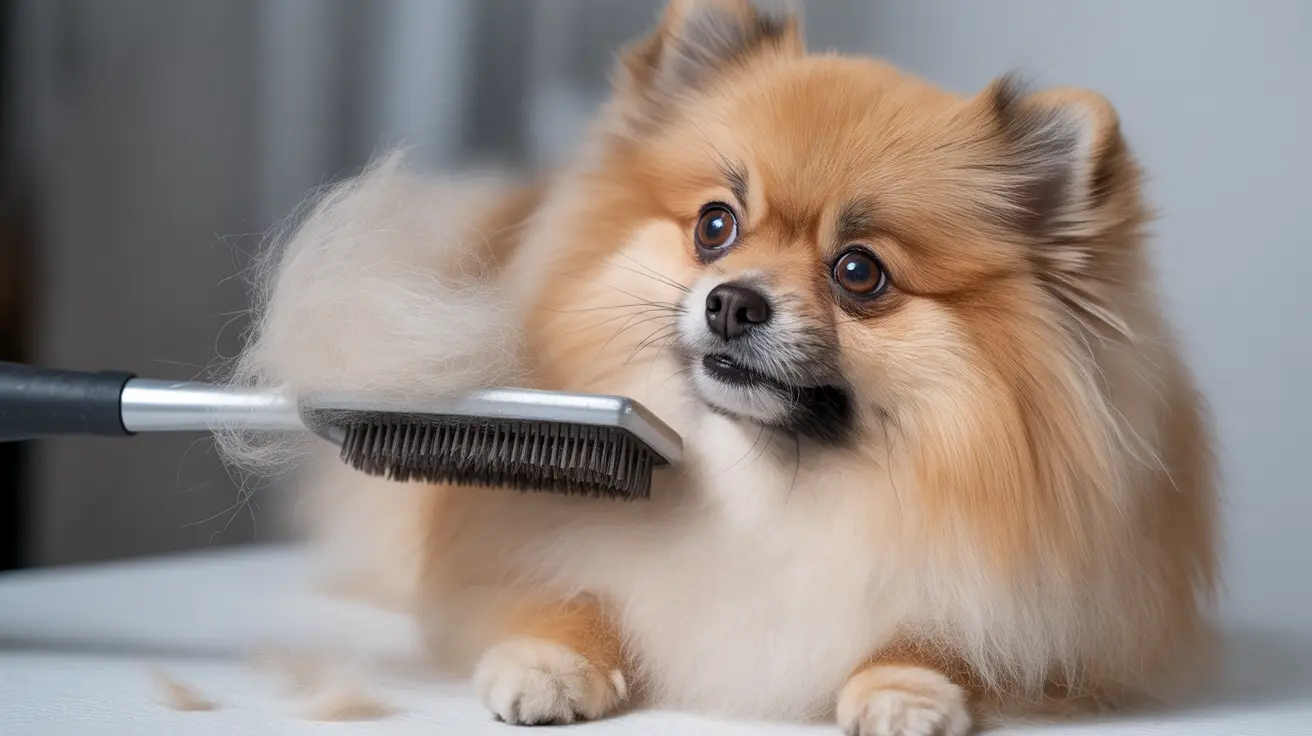Understanding Pomeranian Shedding Patterns
Pomeranians, with their signature fluffy double coats, are known for their beautiful appearance but also their significant shedding habits. As a prospective or current Pomeranian owner, understanding how these adorable companions shed is crucial for proper care and maintenance.
While these small dogs may seem manageable due to their tiny size, their shedding patterns can surprise unprepared owners. Their double coat consists of a dense undercoat and a longer topcoat, both of which contribute to regular hair loss throughout the year.
Seasonal Shedding Cycles
Pomeranians experience two major shedding seasons annually. During spring, they shed their heavy winter coat to prepare for warmer weather. Similarly, in fall, they shed their summer coat to make way for thicker winter fur. These periods, known as "blowing coat," can last anywhere from 2-4 weeks.
During these seasonal changes, owners can expect significantly more fur loss than usual. The undercoat will come out in clumps, requiring daily grooming attention to prevent matting and maintain coat health.
Special Shedding Circumstances
Puppy Coat Transition
Between 4-12 months of age, Pomeranian puppies go through a significant coat change known as "puppy uglies." During this phase, they shed their soft puppy fur and develop their adult double coat. This transition period can be particularly dramatic, with uneven shedding patterns and temporary changes in appearance.
Health-Related Shedding
Various health factors can influence shedding intensity, including:
- Hormonal changes, especially in unspayed females
- Stress or anxiety
- Nutritional deficiencies
- Skin conditions or allergies
- Underlying medical conditions
Managing Your Pomeranian's Shedding
Daily Maintenance
Regular grooming is essential for controlling Pomeranian shedding. A consistent routine should include:
- Daily brushing during heavy shedding periods
- Bi-weekly brushing during normal periods
- Regular bathing every 4-6 weeks
- Using appropriate grooming tools designed for double-coated breeds
Professional Grooming
Professional grooming services every 6-8 weeks can help maintain your Pomeranian's coat health. Groomers can:
- Remove loose undercoat effectively
- Check for skin issues
- Trim problem areas
- Provide specialized treatments when needed
Prevention and Control
To minimize excessive shedding:
- Feed a high-quality diet rich in omega fatty acids
- Maintain regular veterinary check-ups
- Keep your dog's stress levels low
- Use appropriate supplements if recommended by your vet
- Ensure proper hydration
Frequently Asked Questions
Do Pomeranians shed a lot compared to other small dog breeds?
Yes, Pomeranians shed moderately to heavily compared to other small breeds due to their double coat. While their small size means less total hair, they shed more consistently than many single-coated breeds.
When do Pomeranians typically shed the most throughout the year?
Pomeranians shed most heavily during spring and fall seasonal changes, typically lasting 2-4 weeks each time. They also shed during their puppy coat transition between 4-12 months of age.
How often should I groom and brush my Pomeranian to manage shedding effectively?
During normal periods, brush your Pomeranian 2-3 times per week. During heavy shedding seasons, daily brushing is necessary. Professional grooming is recommended every 6-8 weeks.
What factors can increase shedding in Pomeranians besides seasonal changes?
Factors that can increase shedding include stress, poor nutrition, hormonal changes, medical conditions, allergies, and skin infections. Proper veterinary care and maintenance can help manage these issues.
What tools and grooming techniques are best to reduce matting and excessive hair loss in Pomeranians?
Use a slicker brush for daily grooming, an undercoat rake for seasonal shedding, and a pin brush for finishing. Brush in layers, working from the skin outward, and pay special attention to areas prone to matting like behind the ears and under the legs.
Conclusion
While Pomeranians do shed significantly, proper management through regular grooming, good nutrition, and attention to their health can keep shedding under control. Understanding their shedding patterns and maintaining a consistent care routine will help ensure your Pomeranian's coat stays healthy and manageable.






